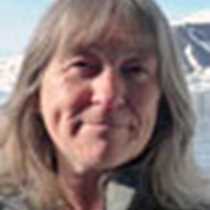In the North Sea
Journeys at sea are never predictable, and so it was that the storm brewing up in the North Sea through the course of Monday overturned our carefully-planned itinerary for today. Last night we retired, anticipating the usual overnight transit towards our next destination before a scheduled arrival in tranquil waters at Oostende, and promises of lace and chocolate in Bruges beyond. But it was not to be.
Instead, we enjoyed an unrivalled night’s sleep still in the security of the dock in Amsterdam as the passing weather systems raged further out. Then, as the light of dawn came creeping over the horizon, we slipped safely away, assisted by tugs, making our way along the river, through the sea-lock, and out into the open sea. Up went the ropes to steady our morning passage from cabin to dining room, as the National Geographic Explorer ploughed through the white-capped waves. Around us was a great variety of container ships, radiating forth from the mouth of the channel, and later North Sea oil platforms also appeared in distant view.
A day at sea was before us, with no land in sight. As an alternative, we were presented with four metaphorical islands by David Barnes, Jim Kelly, Kenneth Brassil, and Catherine Karnow, our National Geographic photographer. David’s well-cultivated island was populous, thronged with people of many nationalities, languages and cultures, coming together to forge a common European identity while celebrating their differences and striving to find a harmonious course amid sometimes turbulent waters.
Jim’s island, however, although founded on a solid rock of scientific narrative, told a more somber story, of the crucial role that tides played during the Normandy beach landings of World War Two, of the works of calculation which had led to the accurate tidal predictions, and of the many thousands of allied and German lives which were lost that day.
After lunch, Kenneth took us to an entirely different landscape. Around this island, Kenneth’s swirling currents challenged our assumptions about the past and prompted us to think about ways of navigating history and its layers of meaning. Finally, Catherine’s island was a picture of Normandy pleasures – cider orchards, medieval farmhouses, traditional cheese makers, classic brasseries and patisseries – altogether a garden of delights awaiting us in days to come.
As our sea-day islands of memory and imagination drifted off behind us, we found that we had made our way through the North Sea, and that the very material coasts of both France and England were coming into view, telling us that we would soon be entering the English Channel. After recap and an excellent dinner, the day concluded with a spectacular lightning show, right on schedule.




